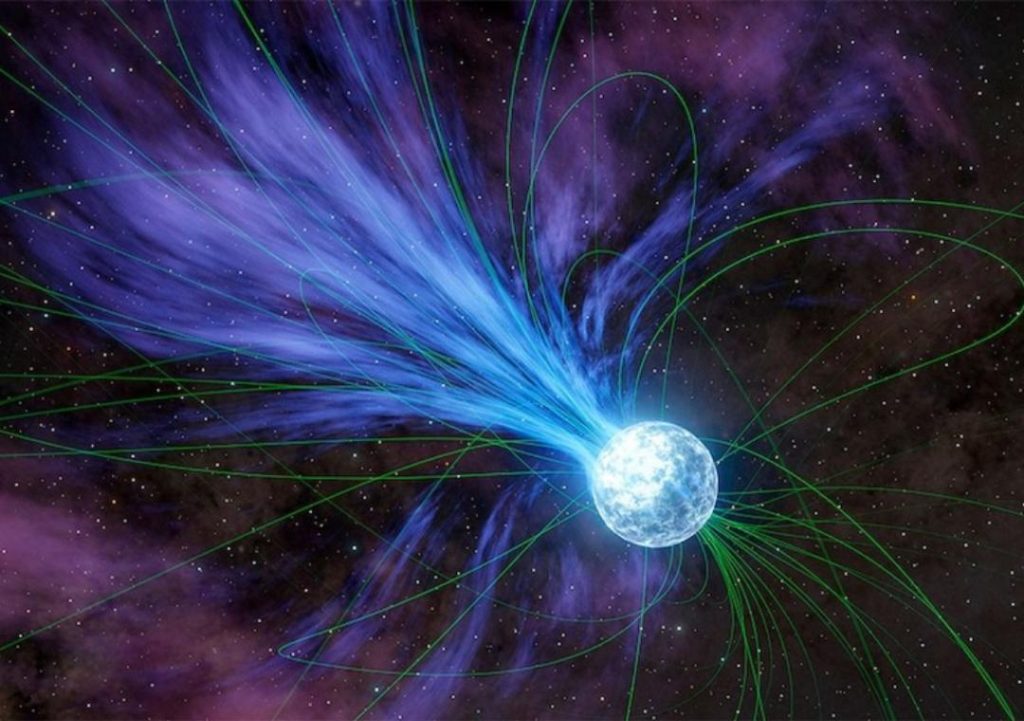
Gold & Platinum Created through Neutron Stars’ Explosions: Study
For centuries, humans have been fascinated by the origin of precious metals like gold and platinum. Where do these valuable elements come from? Scientists have long been trying to uncover the secrets of their creation, and a recent study has shed new light on this mystery. According to a study led by Columbia University student Anirudh Patel, magnetars or highly magnetized neutron stars played a crucial role in the creation of these elements through a cosmic event over 20 years ago.
Magnetars are a type of neutron star that is incredibly dense and has a magnetic field that is trillions of times stronger than the Earth’s magnetic field. When these magnetars explode, they release massive flares of energy that contain elements like gold and platinum. The study suggests that it was one such explosion that created these precious metals.
The study, which was published in The Astrophysical Journal, analyzed data from NASA’s Fermi Gamma-Ray Space Telescope, which detected a massive burst of gamma rays from a magnetar in 2004. The burst was so powerful that it was visible from Earth, and scientists were able to study it in detail.
The researchers found that the burst was caused by the magnetar’s magnetic field becoming unstable and collapsing in on itself. This collapse released an enormous amount of energy, including a massive amount of heavy elements like gold and platinum.
The study’s lead author, Anirudh Patel, said in a statement, “We found that the explosion was so powerful that it produced a large amount of heavy elements, including gold and platinum. These elements were created through the rapid capture of neutrons by atomic nuclei, a process known as nucleosynthesis.”
The researchers believe that this type of explosion happens approximately once per decade in the Milky Way galaxy and annually across the observable universe. This means that there are likely many more magnetars out there that are capable of creating precious metals like gold and platinum.
The discovery of gold and platinum in a magnetar explosion has significant implications for our understanding of the origin of these elements. It suggests that they are not formed through the traditional process of nuclear reactions in the hearts of stars, but rather through the explosive power of magnetars.
This new understanding of the origin of gold and platinum also raises questions about the potential for other elements to be created through similar processes. Scientists are eager to continue studying magnetars and other cosmic events to learn more about the origins of the elements that make up our universe.
The Study’s Findings
The study’s findings are based on data from NASA’s Fermi Gamma-Ray Space Telescope, which detected a massive burst of gamma rays from a magnetar in 2004. The researchers analyzed the data to determine the energy output of the burst and the elements that were created during the explosion.
The study found that the burst released an enormous amount of energy, including a massive amount of heavy elements like gold and platinum. The researchers used computer simulations to model the explosion and determine the conditions under which the elements were created.
The study’s findings suggest that the explosion was so powerful that it produced a large amount of heavy elements, including gold and platinum. These elements were created through the rapid capture of neutrons by atomic nuclei, a process known as nucleosynthesis.
Conclusion
The discovery of gold and platinum in a magnetar explosion has significant implications for our understanding of the origin of these elements. It suggests that they are not formed through the traditional process of nuclear reactions in the hearts of stars, but rather through the explosive power of magnetars.
The study’s findings are based on data from NASA’s Fermi Gamma-Ray Space Telescope, which detected a massive burst of gamma rays from a magnetar in 2004. The researchers analyzed the data to determine the energy output of the burst and the elements that were created during the explosion.
The study’s lead author, Anirudh Patel, said in a statement, “We found that the explosion was so powerful that it produced a large amount of heavy elements, including gold and platinum. These elements were created through the rapid capture of neutrons by atomic nuclei, a process known as nucleosynthesis.”
The discovery of gold and platinum in a magnetar explosion has significant implications for our understanding of the origin of these elements. It suggests that they are not formed through the traditional process of nuclear reactions in the hearts of stars, but rather through the explosive power of magnetars.






